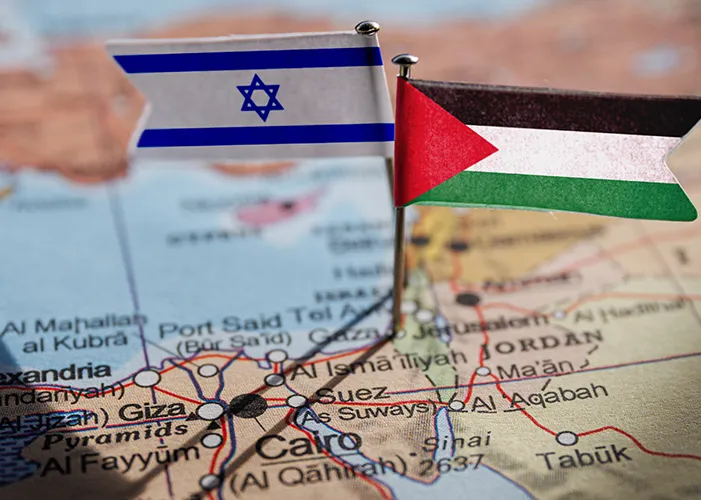Israel-Hamas Ceasefire Agreement: A Comprehensive Timeline of the 15-Month Conflict
The 15-month-long conflict between Israel and Hamas, one of the deadliest in the region’s history, has finally reached a tentative resolution with a ceasefire agreement brokered by the United States, Egypt, and Qatar. The war, which began with a surprise Hamas attack in October 2023, has claimed tens of thousands of lives and displaced millions, leaving behind a humanitarian crisis of unimaginable proportions.
The ceasefire marks a significant yet fragile milestone in the history of this decades-long conflict. Here is an in-depth look at the timeline of events, the key developments in the agreement, and the challenges that lie ahead.
The Beginning of the Conflict
- October 7, 2023: The conflict began with a surprise attack by Hamas on Israel, marking one of the most devastating days in the country's history. Hamas fighters infiltrated Israeli territory, killing 1,210 people, most of whom were civilians, and taking 251 hostages.
- Immediate Repercussions: The Israeli government launched a massive military response in Gaza, targeting Hamas strongholds. The airstrikes and shelling escalated into one of the most intense military campaigns in the region, displacing millions of Gaza’s residents.
The War’s Toll on Civilians
The fighting took an unprecedented toll on civilians, especially in Gaza:
- Casualties: Over 46,707 people in Gaza lost their lives, according to the territory’s health ministry. Most were civilians, with many casualties reported in schools, homes, and hospitals targeted by airstrikes.
- Displacement: The pre-war population of Gaza, estimated at 2.3 million, was largely displaced. With infrastructure in ruins, basic necessities such as food, water, and electricity became scarce.
- Hostages: Out of the 251 hostages taken by Hamas during the October 2023 attack, 94 remain in Gaza. Israeli authorities believe 34 of them are deceased.
The Road to the Ceasefire Agreement
Efforts to broker a truce involved intense negotiations over the course of a year:
- Mediation by Global Powers: The United States, Egypt, and Qatar played pivotal roles in mediating talks between Israel and Hamas. Although previous attempts came close, they ultimately failed due to last-minute disagreements.
- Breakthrough in Negotiations: The current ceasefire agreement was announced after months of back-and-forth discussions. Key players, including US President Joe Biden and Qatar’s Prime Minister, confirmed that the truce would begin on Sunday, January 19, 2025.
Details of the Ceasefire Deal
- Hostage Release: As part of the first phase of the agreement, Hamas has agreed to release 33 Israeli hostages. Further negotiations are expected to address the remaining captives.
- Ceasefire Implementation: Both sides have agreed to pause hostilities, allowing humanitarian aid to reach Gaza and initiating discussions on long-term peace.
Challenges and Setbacks
Despite the announcement, the path to peace remains fraught with complications:
- Israeli Accusations: Prime Minister Benjamin Netanyahu accused Hamas of backtracking on certain terms of the agreement, particularly concerning security arrangements near Gaza’s border with Egypt. This led to delays in the Israeli cabinet’s approval of the deal.
- Continued Violence: Even after the ceasefire announcement, Israeli airstrikes targeted over 50 sites in Gaza within 24 hours, killing at least 45 Palestinians. Victims included families sheltering in a school and residents in Deir Al-Balah, Bureij camp, and Rafah.
- Hamas’s Warning: In response to ongoing airstrikes, Hamas warned that continued aggression could jeopardize the release of hostages. The group’s armed wing, the Ezzedine Al-Qassam Brigades, issued a statement cautioning Israel against further provocations.
The Humanitarian Crisis in Gaza
The war has left Gaza in a dire state, with millions of residents facing unimaginable hardships:
- Widespread Destruction: Entire neighborhoods have been reduced to rubble, and critical infrastructure, including hospitals and schools, has been destroyed.
- Healthcare Collapse: Overwhelmed hospitals struggled to treat the injured, with severe shortages of medical supplies, electricity, and clean water compounding the crisis.
- International Aid Efforts: Humanitarian organizations have called for urgent assistance to address the needs of displaced families. The ceasefire agreement is expected to facilitate the entry of aid into the region.
The Path Ahead
While the ceasefire represents a moment of hope, its success depends on several factors:
- Adherence to Terms: Both sides must demonstrate a commitment to upholding the agreement and avoiding provocations that could reignite hostilities.
- Humanitarian Aid: The immediate priority is providing relief to Gaza’s displaced population and rebuilding critical infrastructure.
- Long-Term Peace: Negotiations must address the root causes of the conflict, including territorial disputes, security concerns, and the rights of Palestinian residents.
The Israel-Hamas ceasefire marks the end of a devastating chapter in the region’s history, but the road to lasting peace remains uncertain. As both sides prepare for further negotiations, the international community’s role in facilitating dialogue and providing humanitarian support will be crucial.
For the people of Gaza and Israel, the ceasefire is a much-needed respite, offering a glimmer of hope amid the destruction. However, only time will tell whether this agreement can pave the way for a more stable and peaceful future.
Stay tuned for more updates as the ceasefire takes effect and the region begins its journey toward recovery.
